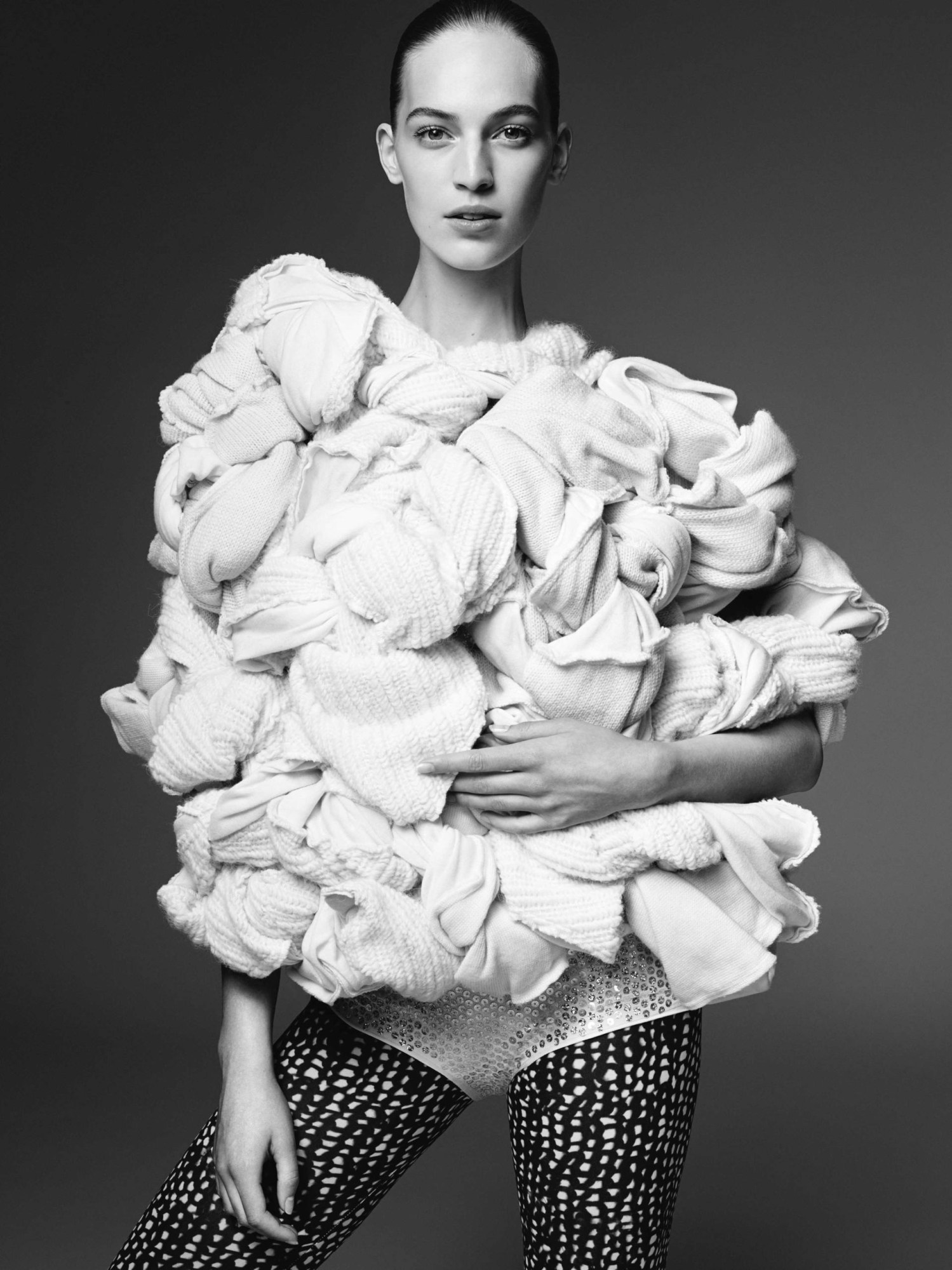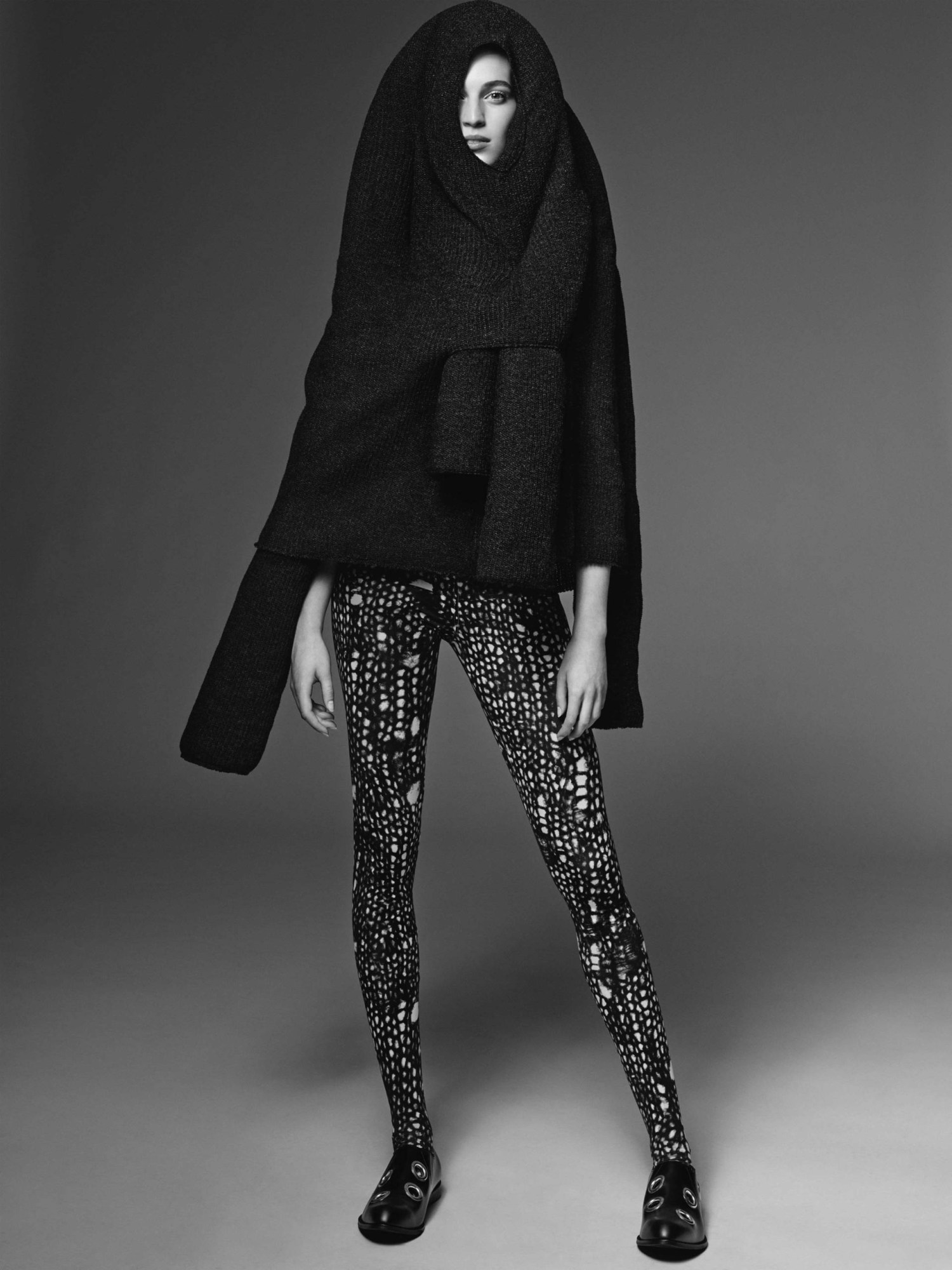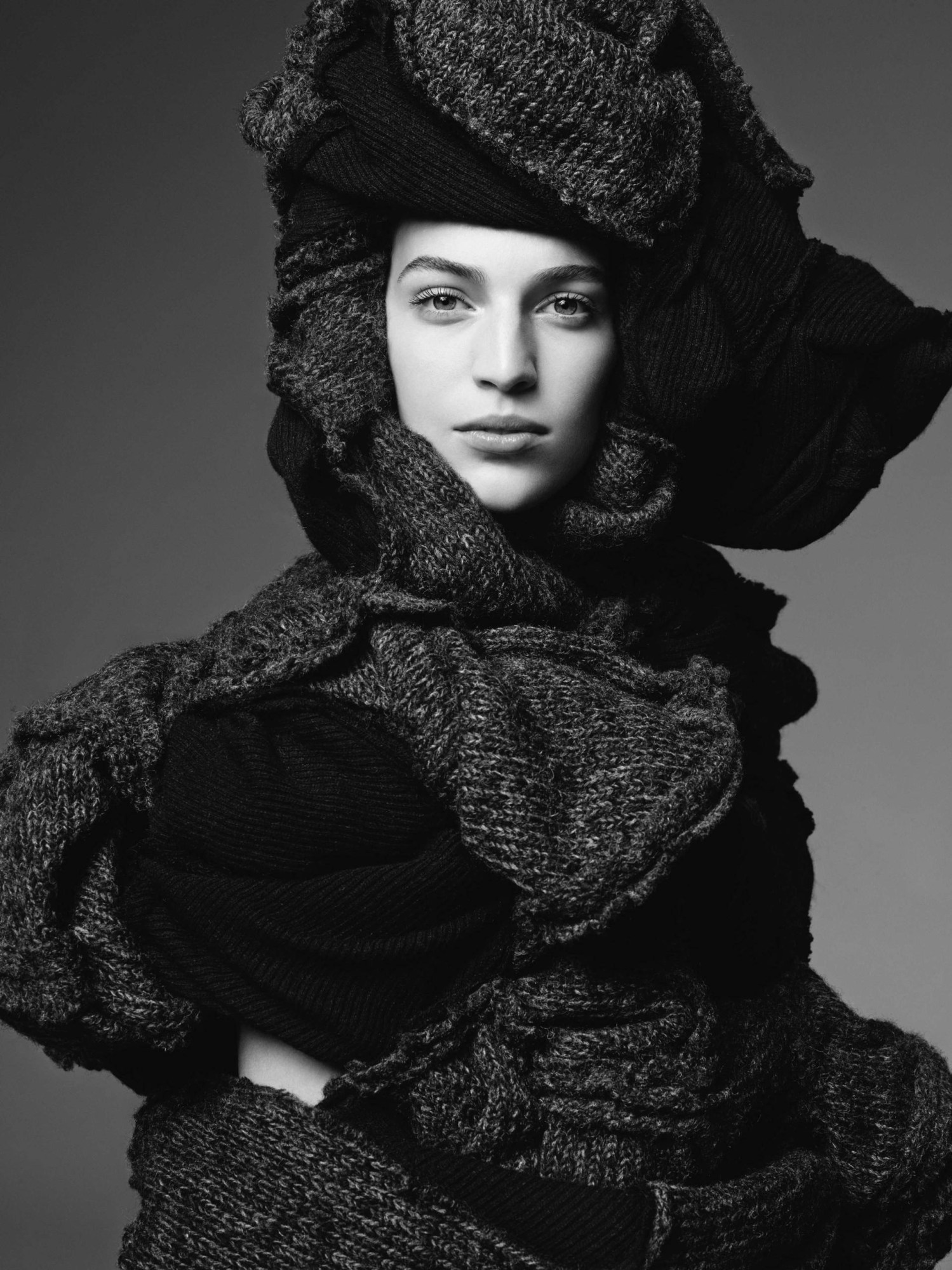Rei Kawakubo’s refusal to accept the fashion system as it exists, to engage with it thoroughly, to even give interviews about her work – it seems as if she might never give an interview again as it stands at this present time – points to her very profound influence on it. Her very refusal to accept the way things are, to play the game, or even really to think about being in the fashion industry at all, gives what she does that illusive shock of the new in that world – and this is at a time when nothing new or shocking seems achievable ever again. Her very distance seems to guarantee her ability to concentrate on producing ‘new clothes’. In this way, Kawakubo might not see herself within the fashion world’s confines, but with each passing collection, she most certainly affects what goes on within it both psychologically and materially.
Rei Kawakubo’s profound influence in the fashion industry is as a symbol, a touchstone by which many other designers can justify their risk-taking and sometimes their very existence in the profession. When designers work in the big machines of fashion, and are not so tightly in control of their own destinies as Rei Kawakubo is, when feeling the pressure of looming shareholders and faced by an onslaught of marketing people who would rather have them produce a slew of nondescript T-shirts and handbags, these designers can point to the fact that somebody like Kawakubo exists, occupies a place of honor in the fashion world and operates a successful business. She is the ultimate, symbolic fuck you in the face of the often myopic marketing machine. That’s why whatever Kawakubo chooses to do or not do, is important for fashion overall and for all of us who are interested in it – or who merely wear clothes.
For more than forty years that I have been making clothes, I have never thought about fashion. In other words, I have almost no interest in it. What I’ve only ever been interested in is are clothes that one has never seen before, that are completely new, and how and in what way they can be expressed. Is that called fashion? I don’t know the answer. I feel that the fashion business inhabits a different world again. The point is, is it possible to connect these two completely different worlds?” Rei Kawakubo, Comme des Garçons

All clothes Comme des Garçons
Her current Comme des Garçons women’s autumn/winter 14 collection and her new men’s spring/summer 15 collection are no exceptions. As she explained of her women’s collection – in a rare written statement, only given to a few editors at the time of the show, of course there was no press release:
“The theme of the collection this time is MONSTER. It’s not about the typical Monster you find in Sci-Fi and video games. The expression of the Monsters I have made have a much deeper meaning. The craziness of humanity, the fear we all have, the feeling of going beyond common sense, the absence of ordinariness, expressed by something extremely big, by something that could be ugly or beautiful. In other words, I wanted to question the established standards of beauty.”
In a collection of largely knitted monstrosities, what seems to really haunt Kawakubo is the demanding, rapacious monster of the process of making clothes itself; consuming everything in its path and always demanding more ‘new’ from her, she has in fact said, “Nothing new can come out of a situation without suffering.” It might be a case of cod psychology, but those heavy knitted chains – like something Jacob Marley’s ghost would wear – the knotted sleeves, the massive, enveloping, suffocating shapes, all point to a nightmare pursuing Kawakubo. But she also has a knack of turning nightmares into dreams – this is a great collection – and what can never be underestimated about her output for Comme des Garçons, is that it is not all deathly, crushingly serious you know.

In fact, there is often a deadly un-seriousness about Comme des Garçons that makes the collections so appealing. Sometimes what you see is really what you get. It should always be remembered that Rei Kawakubo called her label Comme des Garçons – ‘Like the Boys’ – just because she liked the sound of it.
Take the military inflected men’s spring/summer 15 collection with its overt anti-war statements written on the clothing. Phrases such as ‘Soldier of Peace’, ‘Anything war can do, peace can do better’ and ‘Peace, Love Empathy’, sat alongside camouflage, netting, traditional military-inspired brass buttoned jackets, but also leopard print, pastel shantung silk and insanely long pointed shoes. The collection is a combination of the rebellious and the reactionary, the silly and the serious and if it might be boiled down to anything, it’s punk. As is Rei Kawakubo.
And as to those shoes, they give a key to it all. Seen by Kawakubo in a photograph of Mexican cowboys, the designer decided she wanted to produce an even more exaggerated version in ankle boot form. A small factory in Mexico was approached – having never produced footwear for such clients before – and carried out their task with suitable aplomb. When asked later on, ‘What were those mental shoes about?’ Adrian Joffe, the CEO of Comme des Garçons, simply replied, “Well, Rei hates fighting and a soldier wouldn’t do too well in those would he?” Quite.
Credits
Text Jo-Ann Furniss
Photography Karim Sadli
Fashion Director Alastair McKimm
Hair Damien Boissinot at Jed Root.
Make-up Christelle Cocquet at Calliste using Chanel.
Nail technician Anatole Rainey at Premier Hair and Make-up.
Photography assistance Antoni Ciufo, Laurent Chouard.
Digital technician Edouard Malfettes. Styling assistance Katelyn Gray, Aline de Beauclaire.
Hair assistance Kyoko Kishita.
Make-up assistance Mayumi Oda.
Model Vanessa Axente at Viva London.
Special thanks to Daphne Seybold.
All clothing Comme des Garçons.
